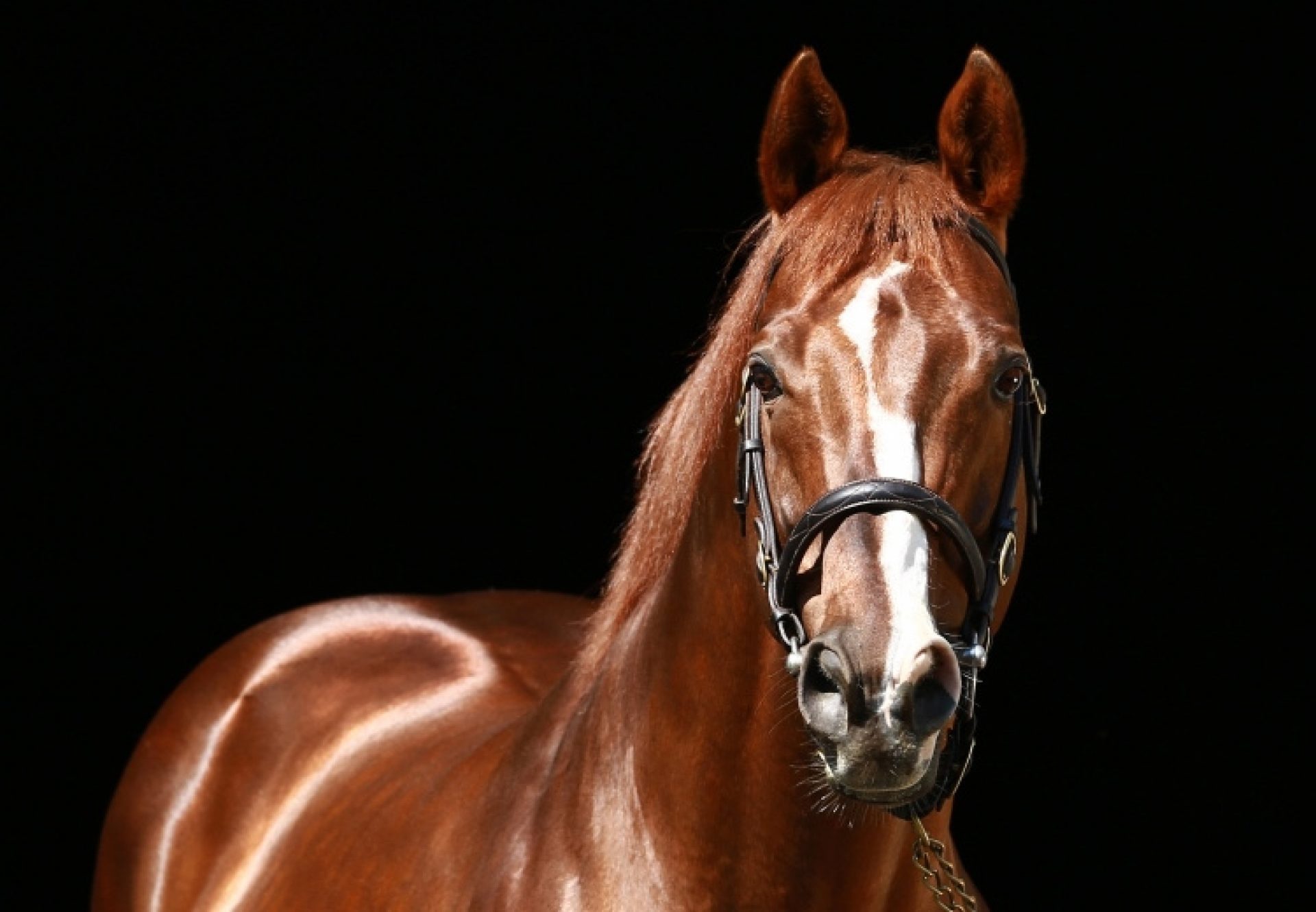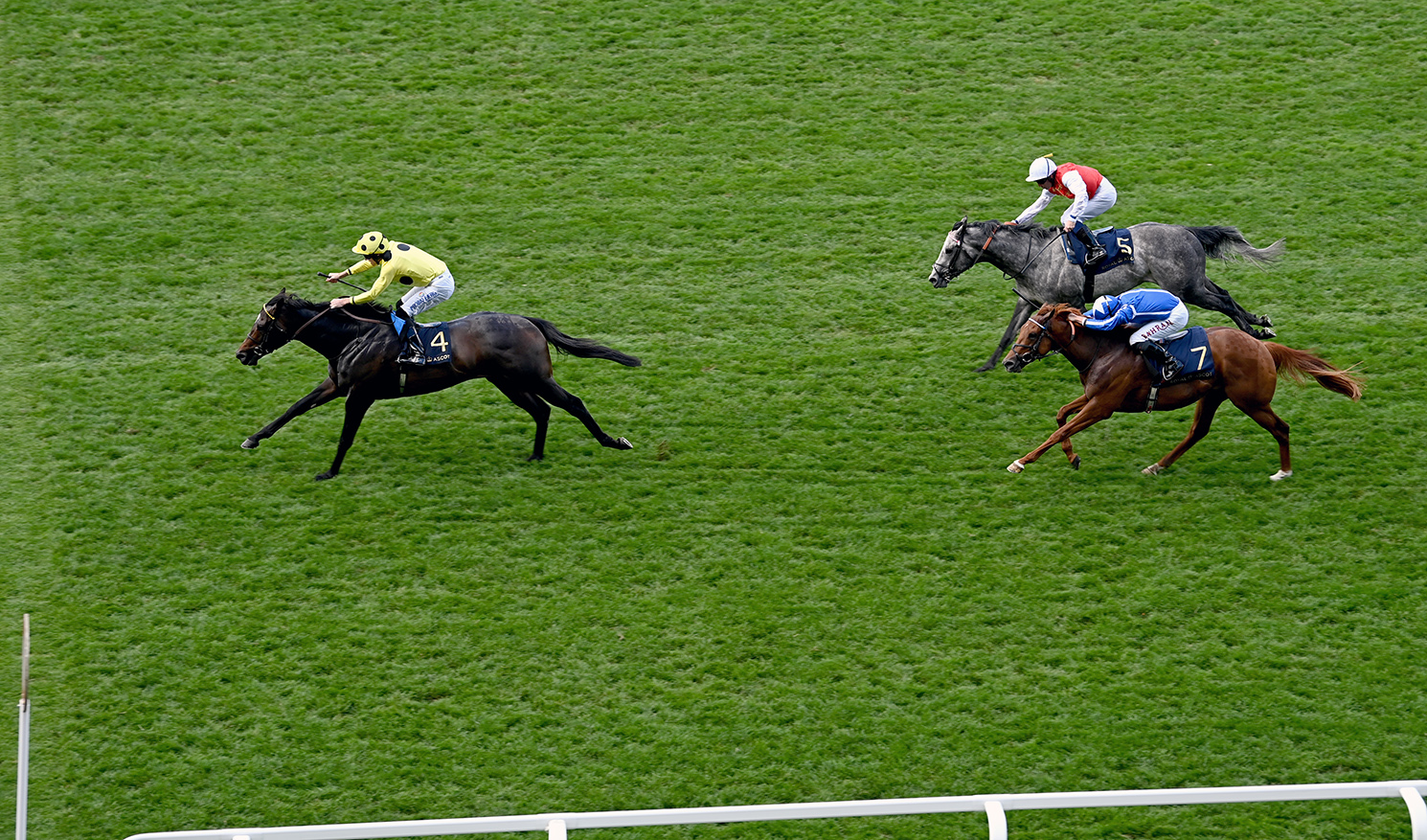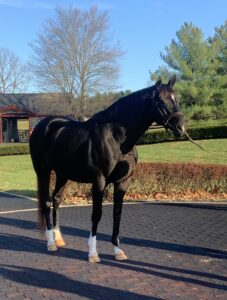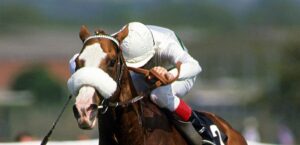Even today, 24 years on from the summer of 2000, it is Giant’s Causeway who invariably rises to the top of a conversation when it comes to an example of toughness in the thoroughbred.
Giant’s Causeway danced every dance that season for Aidan O’Brien, running second in the Newmarket and Irish 2,000 Guineas before embarking on a Group 1 race sweep that encompassed the St James’s Palace, Eclipse, Sussex and Irish Champion Stakes. The races were never won by more than half-a-length and in the case of his clashes against Kalanisi by even less as he overhauled that rival’s short-lived advantage. Giant’s Causeway liked to eyeball horses, knowledge which Kevin Darley put to good effect by coming wide with his successful challenge on Observatory in the Queen Elizabeth II Stakes at Ascot that September. That was Giant’s Causeway’s eighth consecutive try at Group 1 level but he wasn’t finished, further enhancing his reputation by going down by barely a neck to Tiznow in the Breeders’ Cup Classic on his first and only try on dirt.
Giant’s Causeway was the best of a deep wave of Storm Cat progeny to pass through Ballydoyle during that era. As a Group 1-winning juvenile, he certainly wasn’t short of the speed or precocity that defined much of Storm Cat’s stud career but there was also a toughness to him that he most likely inherited from his dam, the Rahy mare Mariah’s Storm.
The description ‘tough’ is often bandied about for some of those good American racemares. But if any runner deserves to be remembered that way it is Mariah’s Storm.
Bought for $85,000 as a yearling by Bill and Margie Peters, Mariah’s Storm never won a Grade 1 but did take ten of her 16 starts for trainer Don von Hemel, eight of which came after she fractured a cannon bone in the Alcibiades Stakes as a two-year-old. Evidently the injury was bad enough for Mariah’s Storm to be pulled up and vanned off the track; given a number of months off, she returned to win the Grade 2 Breeders’ Cup Stakes and a quartet of Grade 3 races – the Aksarben Oaks, Falls City Handicap, Arlington Matron Handicap and Arlington Heights Oaks – on the dirt and the Listed Mrs. Revere Stakes on turf. In fact, her story caught the attention of film director John Gatins, who used it as the basis for his film Dreamer: Inspired By A True Story.

Giant’s Causeway: influence never far away at Royal Ascot. Photo – Coolmore
The further family was cultivated for several generations by Harry Isaacs’ Brookfield Farms and in keeping with Giant’s Causeway’s own racing and stud records, was versatile regarding turf and dirt. Indeed, Mariah’s Storm’s fourth dam Itsabet is also the fifth dam of another blue hen in Hasili, the dam of Dansili, Cacique and Champs Elysees et al.
Mariah’s Storm was bought for $2.6 million by John Magnier while the mare was carrying Giant’s Causeway at Keeneland in 1996. She has of course gone on to leave a major legacy for Coolmore that is running ever deeper through her various daughters including You’resothrilling, the dam of champions and/or Classic winners Gleneagles, Happily, Marvellous and Joan Of Arc.
Gleneagles had his moment in the sun at Ascot last week as the sire of emphatic King Edward VII Stakes winner Calandagan and Queen Elizabeth II Stakes third Mill Stream. And while Giant’s Causeway is no longer with us, his influence was also never far from the action, notably through his sons Shamardal and Not This Time.
To recap, Shamardal’s son Blue Point was represented by the St James’s Palace Stakes winner Rosallion, a member of the Reem Three dynasty who alongside Big Evs (third in the King Charles III Stakes) has been a driving force behind his sire’s place as a leader among Europe’s younger stallions. Later in the week, Rosallion’s close relative Inisherin, by Shamardal himself, again also looked a sprinter out of the top drawer with his wide-margin win in the Commonwealth Cup.
Meanwhile, Shamardal’s grandson Belardo supplied Tuesday’s Copper Horse Handicap winner Belloccio while his sire Lope De Vega, fresh from a successful early part of the season highlighted by the Poule d’Essai des Pouliches heroine Rouhiya and Prix du Jockey Club one-two Look De Vega and First Look, was on the mark courtesy of the King George V Handicap winner Going The Distance. Lope De Vega’s son Phoenix Of Spain also supplied the Jersey Stakes winner Haatem.
Then there was Shareholder, one of only a handful of representatives in these parts by Taylor Made Farm’s outstanding young Giant’s Causeway stallion Not This Time who scorched home in the Norfolk Stakes.
Giant’s Causeway was also the damsire of Britannia Handicap winner Mickley, from the first crop of Soldier’s Call, and his veteran sire son Footstepsinthesand the damsire of dual Queen Elizabeth II Stakes winner Khaadem.

Inisherin: decisive winner of the Commonwealth Cup under Tom Eaves | Photo: Bill Selwyn
Shamardal’s influence strengthens year on year through his various successful sire sons. That is particularly true of Ballylinch Stud’s Lope De Vega, who currently sits at the top of the leading European sires’ list.
Over in the US, Not This Time is also on the ascent to the point that he is now one of the country’s most popular stallions at $150,000, a far cry from the $12,500 that the ten-year-old commanded as recently as 2020.
The simple answer is that Not This Time supplies high-quality winners on both dirt and turf with regularity, generally upgrading his mares in the process. He’s a particularly good-looking, well-balanced horse himself, and tends to throw to type, something which has long made him appealing commercially. Add in the fact they can come to hand quickly – his first crop, bred off $15,000, included a $1.35 million breezer who turned out to be Grade 1 winner Princess Noor – and it’s easy to see how he’s done so many American breeders, particularly at the lower end, a good turn in recent years.
None of them were bred off a fee greater than $15,000
However, he’s now firmly the domain of leading players at $150,000 thanks to a roll call of 34 stakes winners led by the Grade 1 scorers Epicenter, a champion of his generation who now stands for Coolmore in the US, turf champion Up To The Mark, Cogburn, who recently set a record time of 59.80 for 5 ½ furlongs in the Grade 1 Jaipur Handicap on turf, Sibelius (winner of the Dubai Golden Shaheen), Princess Noor (aforementioned two-year-old Grade 1 winner) and Just One Time (Madison Stakes). None of them were bred off a fee greater than $15,000.

Not This Time: one of America’s most exciting young stallions
Indeed, his fee didn’t go on the march until 2021, when it was raised to $40,000 – and it is this crop of 129 juveniles which is responsible for Norfolk Stakes winner Shareholder.
The colt has plenty of European influences in his pedigree being out of Cloudy Dancer, an Invincible Spirit daughter of British Listed winner Ronaldsay, herself by the Selkirk horse Kirkwall. This is a family that served Bob McCreery’s Stowell Hill Stud well for many years, going back to the 1982-foaled Carwhite mare Birch Creek and producing the likes of Jersey Stakes winner Gale Force Ten along the way.
Given Not This Time’s propensity to work on turf, hopefully we will start to see more of his stock over here. He was an accomplished dirt performer himself during his sole season of racing for Dale Romans, running second in the Breeders’ Cup Juvenile in which he suffered a career-ending soft tissue injury. Yet as a son of Giant’s Causeway, there was always the possibility that he could work as a stallion on both surfaces.
At the time of Not This Time’s retirement to Taylor Made, it has to be said that Giant’s Causeway was lacking a really good US-based sire son. It’s not as if the opportunity hadn’t presented itself. The majority of his stud career was spent at Coolmore’s Kentucky division and as such Giant’s Causeway’s stud record contained numerous high-class dirt runners to go with his turf representatives. A number naturally went to stud but there were plenty of underwhelming stallions among them, notably Aragorn, Carpe Diem, Heatseeker and Fed Biz for all that the likes of Creative Cause and First Samurai have been useful.
Perhaps it is no coincidence that Not This Time is a half-brother to another proven Grade 1 sire in Lane’s End Farm’s Liam’s Map, one of the best sire sons of Unbridled’s Song.
The influences of John Nerud and Tartan Farms, the combination behind the iconic 1960s American runner Dr Fager, are littered throughout the pair’s family. For example, their dam, the Trippi mare Miss Macy Sue, possesses three crosses of Intentionally, a champion sprinter for Tartan and Nerud who became a powerful cog in the whole Tartan operation. In addition, Miss Macy Sue’s dam Yada Yada is a daughter of the Tartan-bred Great Above (by Minnesota Mac and out of Ta Wee, an Intentionally champion half-sister to Dr Fager) and Stem, a Damascus granddaughter of Ta Wee. As such, Yada Yada is inbred 2×3 to Ta Wee.
Tartan sold its bloodstock holdings in 1987, when in an illustration of the regard in which it was held its dispersal yielded approximately $33.3 million at Fasig-Tipton. However, the rise of Not This Time is just one indication of how its influence and that of Nerud is even today never far away. Not This Time covered his first six-figure book in 2023, when advertised for $135,000, and it will be fascinating to see how he reacts to those better mares.



